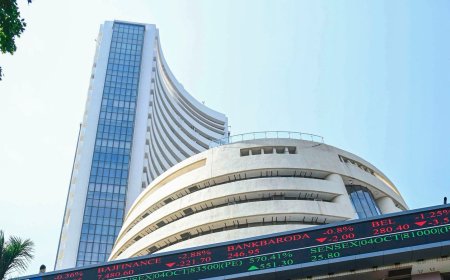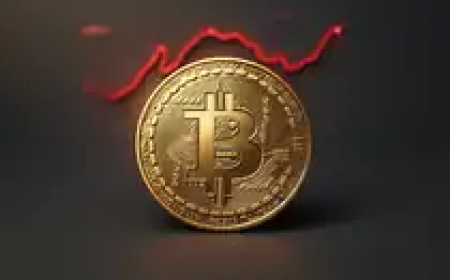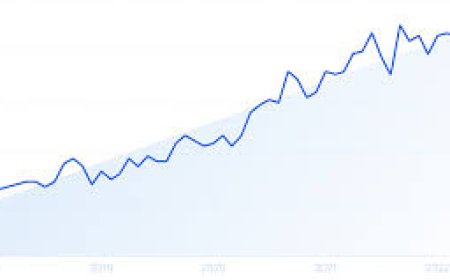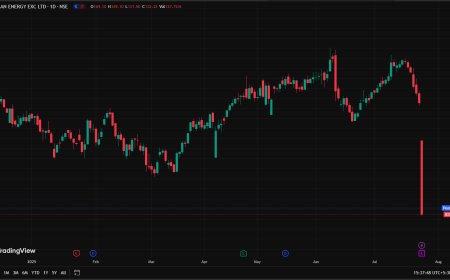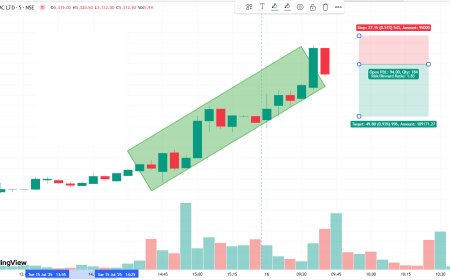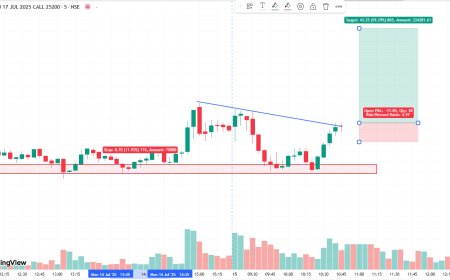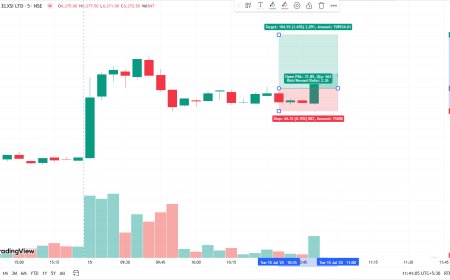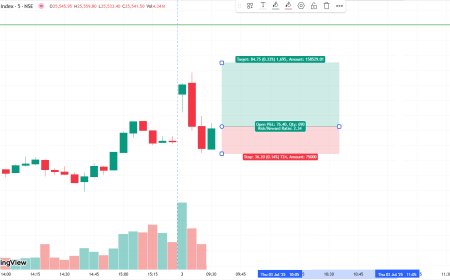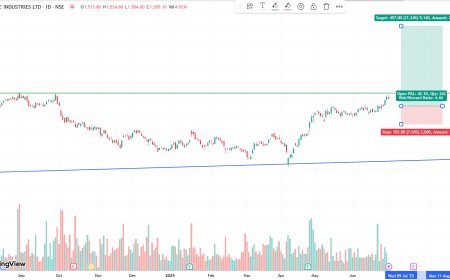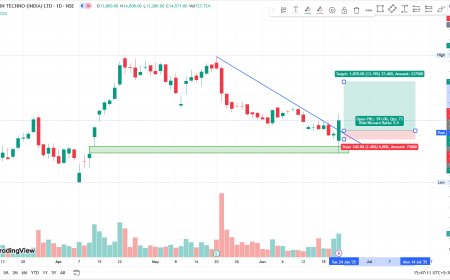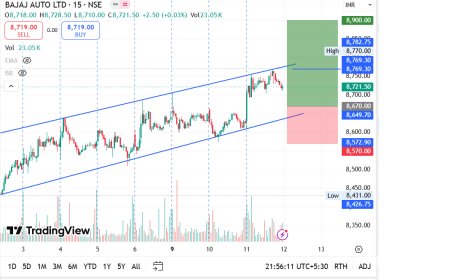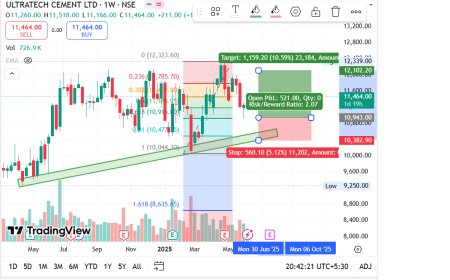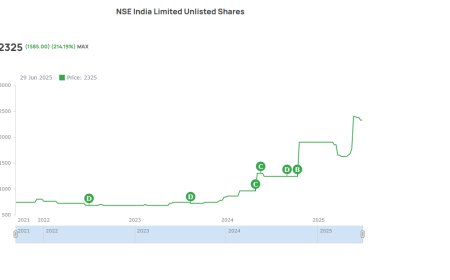India Bonds Edge Higher Tracking US Treasuries; Eyes on Upcoming Debt Supply
Indian government bond yields inch lower as US Treasury yields drop. Investors remain cautious ahead of fresh debt supply. Read the full outlook and market dynamics.

🇮🇳 India Bonds Inch Up Tracking US Treasuries; Debt Supply Eyed
Indian government bonds inched higher in early trade on Friday, tracking an overnight decline in US Treasury yields. However, gains were capped as market participants shifted their focus toward the substantial upcoming domestic debt supply.
With bond investors caught between softening global yields and looming supply-side pressure from the government’s borrowing calendar, the domestic bond market remains delicately balanced. Here’s a comprehensive breakdown of today’s developments, their implications, and the road ahead.
A Quick Recap: What Moved the Market
India's 10-year benchmark bond yield (7.18% 2033 maturity) eased marginally to 7.10%, down from 7.12% in the previous session. The movement mirrored the softening seen in US Treasuries, where the 10-year yield fell by nearly 6 basis points overnight to 4.37%.
The bond rally in the US came after mixed economic data reignited hopes of interest rate cuts later in the year. The softer-than-expected producer price index (PPI) and cooling labor market indicators gave bond bulls room to breathe.
This development trickled into Asian markets, including India, where sentiment turned marginally bullish in morning trade. However, the domestic bond rally was restrained, thanks to persistent concerns about elevated government borrowings.
Global Influence: US Treasuries Set the Tone
The Indian bond market often takes cues from its global counterpart, especially the US Treasuries. Here’s why:
-
US Treasuries are the global benchmark for risk-free rates.
-
Lower US yields make emerging market bonds more attractive, leading to foreign inflows.
-
The US yield movement also hints at global risk appetite and inflation expectations.
Thursday’s US data prompted traders to factor in a higher likelihood of Federal Reserve easing later this year, sparking demand for bonds and sending yields lower. Indian bond traders followed suit, albeit with caution.
Supply Overhang: The Elephant in the Room
Despite the global tailwinds, traders in India remained wary of the upcoming weekly debt auction, where the government is set to raise around ₹39,000 crore through the sale of various bonds.
Here's a breakdown of the expected issuance:
| Instrument | Amount (₹ crore) | Tenor |
|---|---|---|
| G-Sec 7.06% 2028 | 9,000 | 5-year |
| G-Sec 7.18% 2033 | 13,000 | 10-year |
| G-Sec 7.30% 2053 | 17,000 | 30-year |
Large bond supply often leads to a rise in yields as it implies a surge in the availability of debt instruments, unless fully absorbed by demand. Investors are treading cautiously to assess demand appetite for long-duration securities.
RBI’s Policy Stance: Watchful Neutrality
The Reserve Bank of India (RBI) continues to maintain a “withdrawal of accommodation” stance, with the repo rate unchanged at 6.50%. The central bank has repeatedly emphasized the need to keep inflation within the 4% target band while supporting economic growth.
RBI Governor Shaktikanta Das reiterated in the last monetary policy that the central bank is not in a hurry to cut rates, even though inflation has moderated.
For bond markets, this means:
-
Short-term rate cuts are unlikely.
-
Bond traders must factor in sticky yields unless inflation or growth data provide new clues.
-
RBI could intervene in the secondary bond market through Open Market Operations (OMOs) if liquidity becomes too tight.
Yield Curve: A Flattening Bias Persists
The Indian bond yield curve has shown signs of flattening, a phenomenon where the spread between short-term and long-term yields narrows.
Why is this happening?
-
Short-end yields are sticky due to the RBI’s hawkish tone.
-
Long-end yields are declining, reflecting global cues and long-term rate cut expectations.
This flattening is often interpreted as a sign of slowing economic momentum or a peak in the interest rate cycle. Traders looking for tactical gains are favoring the 5–10-year bucket, which offers better risk-reward amid uncertain signals.
Foreign Investment: Mild but Positive
Foreign Portfolio Investors (FPIs) remained net buyers in the debt segment this week, albeit with reduced intensity compared to April’s momentum.
As of Thursday’s data:
-
FPIs net bought Indian bonds worth ₹1,045 crore
-
They remain bullish on long-dated G-Secs, particularly those included or expected to be included in global bond indices like the JP Morgan GBI-EM Index.
The JP Morgan Index inclusion, set to commence in June 2024, continues to act as a medium-term tailwind, ensuring that dips in bond prices are likely to be bought into by global investors.
Traders’ Sentiment: Cautious Optimism
In conversations across trading desks and brokers, the mood is tentatively optimistic but still defensive. Some key voices:
"The US data has surely helped soothe nerves, but the domestic supply and fiscal deficit concerns are too big to ignore. We expect some support around 7.10%, but 7% could be a tough nut to crack,"
— Anupama Kulkarni, Bond Strategist, Kotak Securities
"We continue to favor duration trades in the 5–7 year G-Sec segment. Any auction-induced dip should be used to accumulate,"
— Rajeev Verma, Fund Manager, SBI Mutual Fund
Fiscal Position: What's Weighing the Market?
India’s fiscal deficit target for FY26 is pegged at 5.1% of GDP, a marked improvement from 5.8% in FY25. However, actual gross market borrowings remain high at ₹14.13 lakh crore for FY26.
That’s a lot of paper for the market to absorb.
Key concerns include:
-
Sticky food inflation due to weather disruptions
-
Increased welfare spending ahead of elections
-
Global oil prices, which remain volatile
Any slippage in revenue collections or additional borrowings can tilt the balance and keep bond yields elevated.
Technical Chart Outlook: Eye on Key Levels
Technically, the benchmark 10-year G-Sec has formed a falling wedge pattern, often seen as a bullish reversal indicator.
-
Support: 7.07%
-
Resistance: 7.15%
-
Break below 7.07% could signal 7.00% test
-
Break above 7.15% may invalidate bullish thesis
Traders will closely watch how bonds behave post-Friday’s auction to take directional bets.
What Should Investors Do?
Short-Term View:
Position cautiously ahead of the auction. Tactical gains are possible if cutoff yields come in softer-than-expected.
Medium-Term View:
Remain overweight on the 5–10-year segment, especially with FPI inflows likely to remain supportive.
Long-Term View:
Stay invested in quality G-Secs and consider adding to duration slowly, especially as we approach the JP Morgan index inclusion date.
Balancing Global Relief With Domestic Realities
The Indian bond market remains at an inflection point—torn between global cues pointing toward easing and domestic realities of elevated supply and fiscal caution.
The tracking of US Treasuries provides intermittent relief and lower yields, but India’s borrowing program, inflation risks, and RBI’s careful tone continue to anchor yields in a narrow range.
Investors need to stay nimble, respect technical zones, and watch both global and local macro indicators closely. With key data points and policy decisions lined up in the coming weeks, the bond market story is far from over—if anything, it’s just getting more interesting.
What's Your Reaction?
 Like
0
Like
0
 Dislike
0
Dislike
0
 Love
0
Love
0
 Funny
0
Funny
0
 Angry
0
Angry
0
 Sad
0
Sad
0
 Wow
0
Wow
0




